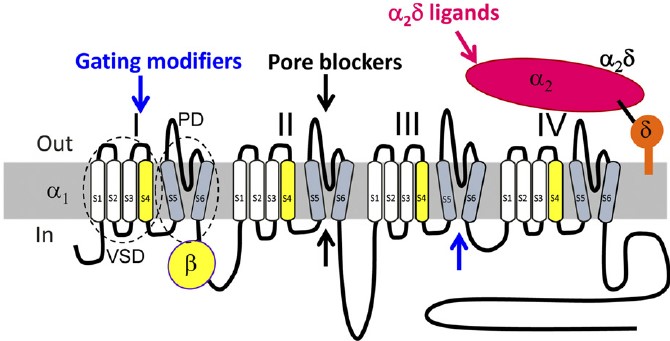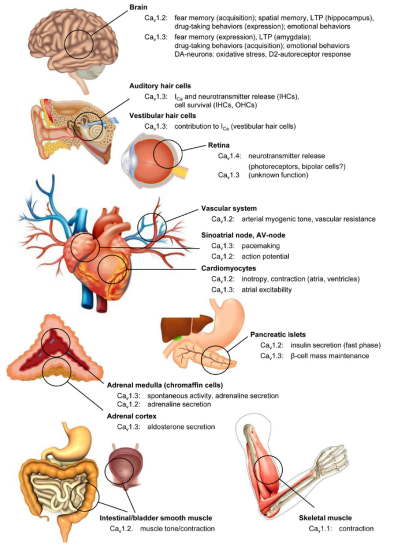- Home
-
Screening
- Ionic Screening Service
-
Ionic Screening Panel
- Ligand Gated Ion Channels
- Glycine Receptors
- 5-HT Receptors3
- Nicotinic Acetylcholine Receptors
- Ionotropic Glutamate-gated Receptors
- GABAa Receptors
- Cystic Fibrosis Transmembrane Conductance Regulators (CFTR)
- ATP gated P2X Channels
- Voltage-Gated Ion Channels
- Calcium Channels
- Chloride Channels
- Potassium Channels
- Sodium Channels
- ASICs
- TRP Channels
- Other Ion Channels
- Stable Cell Lines
- Cardiology
- Neurology
- Ophthalmology
-
Platform
-
Experiment Systems
- Xenopus Oocyte Screening Model
- Acute Isolated Cardiomyocytes
- Acute Dissociated Neurons
- Primary Cultured Neurons
- Cultured Neuronal Cell Lines
- iPSC-derived Cardiomyocytes/Neurons
- Acute/Cultured Organotypic Brain Slices
- Oxygen Glucose Deprivation Model
- 3D Cell Culture
- iPSC-derived Neurons
- Isolation and culture of neural stem/progenitor cells
- Animal Models
- Techinques
- Resource
- Equipment
-
Experiment Systems
- Order
- Careers
Calcium Channels
Voltage-gated calcium channels (VGCC) are found in excitable cells such as muscle and neurons. There are various voltage-gated calcium channel α1 subtypes
L-type (Cav1.1, 1.2, 1.3, 1.4) channels
P/Q-type (Cav2.1) channels
N-type (Cav2.2) channels
R-type (Cav2.3) channels
T-type (Cav3.1, 3.2. 3.3) channels

Fig.1 Diagram of voltage-gated calcium channel subunit topology
Calcium channel have been well recognized as therapeutic targets for treating a number of diseases. However, the calcium channel class is considered to be underexploited due to the lack of reliable functional cell-based assays for high-throughput screening.

Fig. 2 The most important physiologic functions of the different LTCC isoforms
Here, Creative Bioarray utilizes automated patch-clamp technique to test various calcium channel activities with your compound treatment and digital cell Ca2+ imaging with fura-2 AM dye in single human living cells (primary cultured cells or stable-expressing cell lines). We also offer [Ca2+]i measurement to test effects of lead compounds on GPCR-mediated [Ca2+]i signaling pathway, such as Ca-sensing receptor and other GPCR.
Voltage-gated Calcium channels
Cav1.2/β2/α2δ1 (CACNA1C/CACNB2/CACNA2D1)
Tissue Specific Expression: heart, smooth muscle, neurons and endocrine tissue.
Therapeutic Targets: cardiac arrhythmia and hypertension.
Cav2.1/β3/α2δ2 (CACNA1A/CACNB3/CACNA2D2 or CACNA2D4)
Disease: mutations in CACNA1A are responsible for several inherited neurologic disorders including familial hemiplegic migraine, episodic ataxia type 2, and spinocerebellar ataxia type 6 epilepsy.
Therapeutic Targets: pain management.
Cav3.1 (CACNA1G)
Therapeutic Targets: epilepsy, pain sensing and cardiac pacemaking.
Cav3.2 (CACNA1H)
Disease: mutations in CACNA1H have been linked to inherited neurologic diseases including idiopathic, generalized and childhood absence epilepsies.
Therapeutic Targets: seizures, hypertension, angina, neuropathic pain, insomnia, and cancer.
Reference
- Zamponi GW, et al. The Physiology, Pathology, and Pharmacology of Voltage-Gated Calcium Channels and Their Future Therapeutic Potential. Pharmacol Rev. 2015; 67: 821–870.
Related Products
- Overexpression Cell Line
| Catalog | Product Name | Gene Name | Species | Morphology | Price |
|---|---|---|---|---|---|
| ACC-RI0001 | Human CACNA1B Stable Cell Line-HEK293 | CACNA1B | Human | Epithelial | INQUIRY |
| ACC-RI0002 | Human CACNA1H Stable Cell Line-HEK293 | CACNA1H | Human | Epithelial | INQUIRY |
| ACC-RI0066 | Human CACNA1C/NEUROD1/CACNA2D1/KCNJ2 Stable Cell Line-HEK293 | KCNJ2 | Human | Epithelial | INQUIRY |
| ACC-RI0067 | Human CACNA1C/CACNB2/CACNA2D1 Stable Cell Line-HEK293 | CACNA2D1 | Human | Epithelial | INQUIRY |
| ACC-RI0068 | Human CACNA1C/CACNB2/CACNA2D1 Stable Cell Line-CHO | CACNA2D1 | Human | Epithelial-like | INQUIRY |
| ACC-RI0069 | Human CACNA1A/CACNB3/CACNA2D2 Stable Cell Line-CHO | CACNA2D4 | Human | Epithelial-like | INQUIRY |
| ACC-RI0071 | Human CACNA1A/CACNB4/CACNA2D1 Stable Cell Line-CHO | CACNA2D1 | Human | Epithelial-like | INQUIRY |
| ACC-RI0075 | Human CACNA1B/CACNB3/CACNA2D1 Stable Cell Line-CHO | CACNA2D1 | Human | Epithelial-like | INQUIRY |
| ACC-RI0077 | Human CACNA1G Stable Cell Line-HEK293 | CACNA1G | Human | Epithelial | INQUIRY |
| ACC-RI0105 | Human KCNMA1 Stable Cell Line-CHO | KCNMA1 | Human | Epithelial-like | INQUIRY |
Related Section
- Glycine Receptors
- 5-HT Receptors3
- Cystic Fibrosis Transmembrane Conductance Regulators (CFTR)
- Other Ion Channels
- Chloride Channels
- TRP Channels
- ATP gated P2X Channels
- ASICs
- Nicotinic Acetylcholine Receptors
- Ionotropic Glutamate-gated Receptors
- GABAa Receptors
- Sodium Channels
- Potassium Channels
Inquiry

